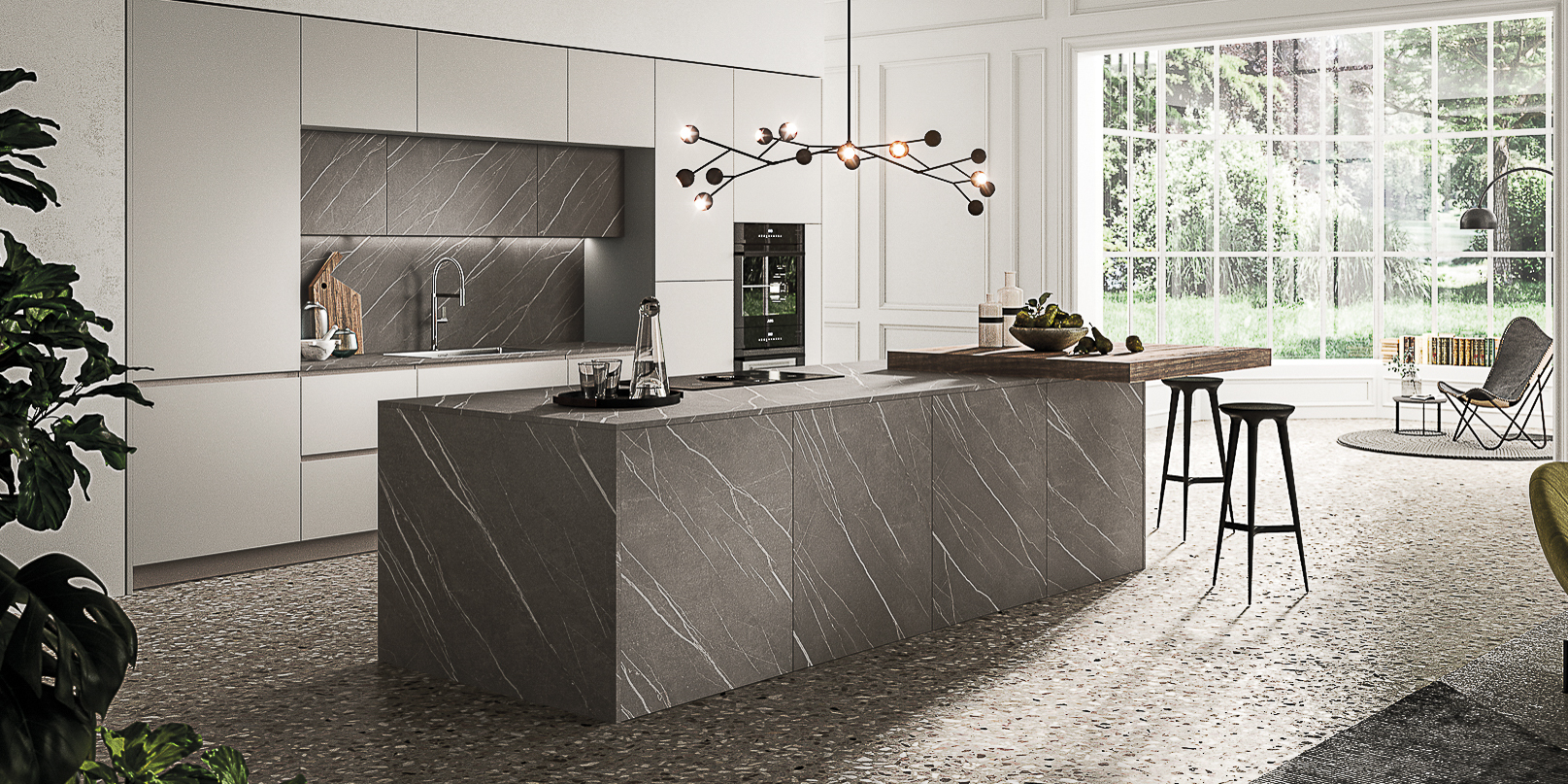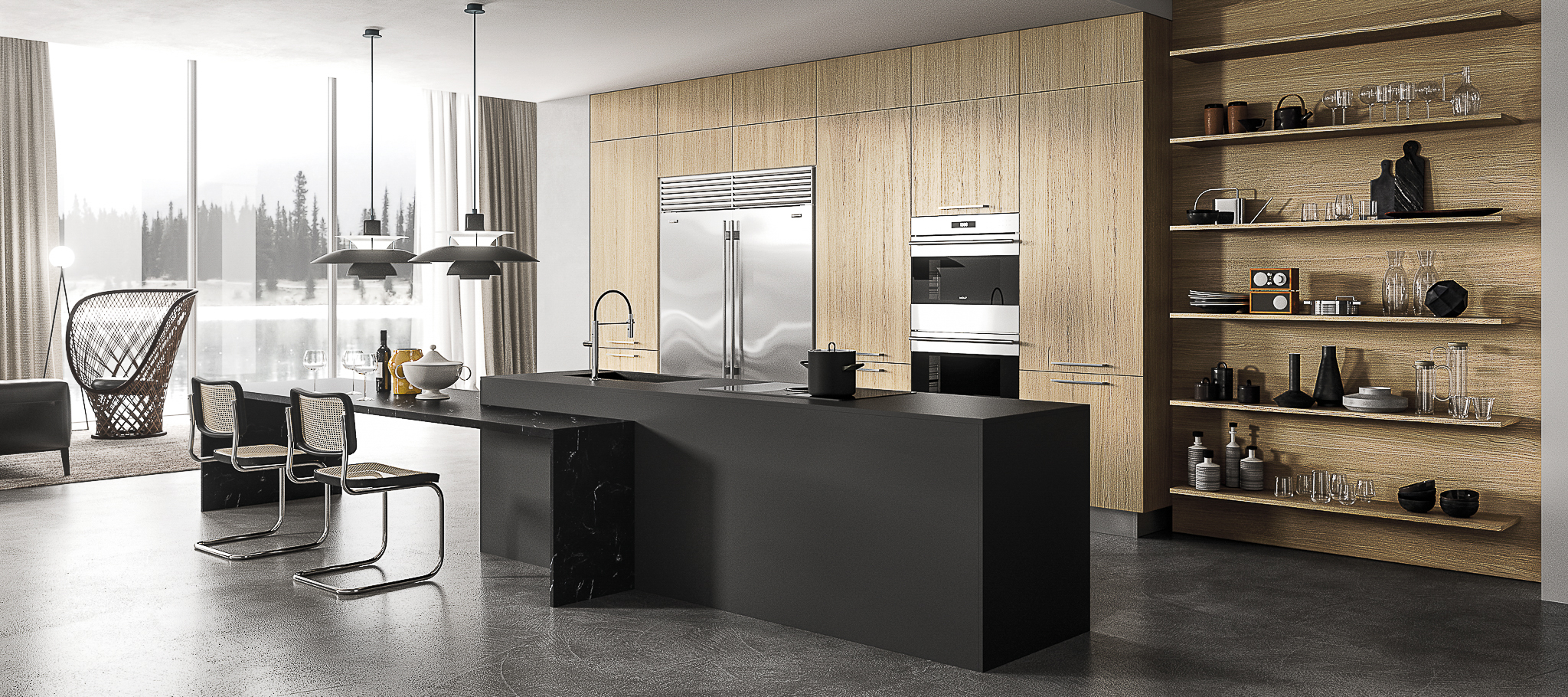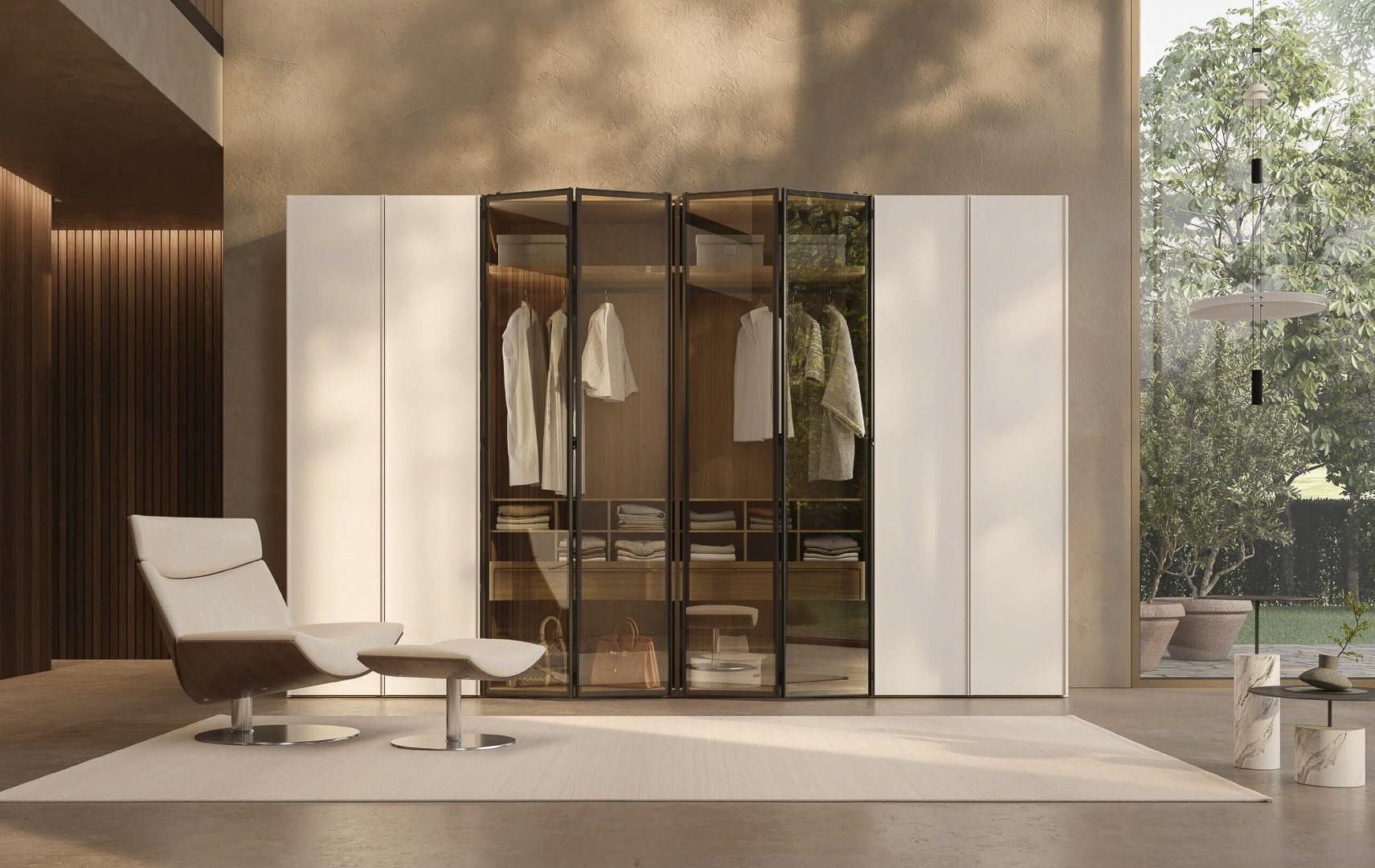Materials, colors, and layouts that define the new functional luxury
The kitchen continues to establish itself as the heart of the home, and in 2025, trends point toward spaces that are more integrated, sustainable, and designed for living as much as for cooking. Design becomes warmer, more practical, and more conscious—without losing sophistication.

1. NATURAL AND SUSTAINABLE MATERIALS
Natural materials take center stage. Textured woods, sintered stone, veined marble, and matte finishes are replacing overly glossy surfaces. Recyclable or low-impact materials are on the rise, reflecting a new way of living with both aesthetic and ecological awareness.
2. WARM PALETTES AND EARTHY TONES
The starkness of pure white fades into the background. 2025 brings kitchens in shades of sand, clay, olive green, terracotta, and warm gray. These tones add elegance without rigidity and pair beautifully with black, bronze, or dark wood accents.
3. HANDLE-FREE DESIGN AND CLEAN LINES
The pursuit of simplicity translates into smooth surfaces, handle-free cabinets (with push-to-open or Gola profiles), and flat fronts. Minimalism is reimagined with finishes that invite touch and a clean aesthetic that never goes out of style.

4. OPEN AND INTEGRATED LAYOUTS
Kitchens are increasingly opening up to the living and dining areas, becoming part of the home’s social flow. Large islands and peninsulas with hidden storage and seating areas are key to merging functionality with conviviality.
5. INVISIBLE TECHNOLOGY AND SMART SOLUTIONS
Smart home features are subtly integrated: dimmable LED lighting, panel-ready appliances, automated opening systems, and interior organizers that make the most of every inch. The goal: everything within reach, nothing in sight.







